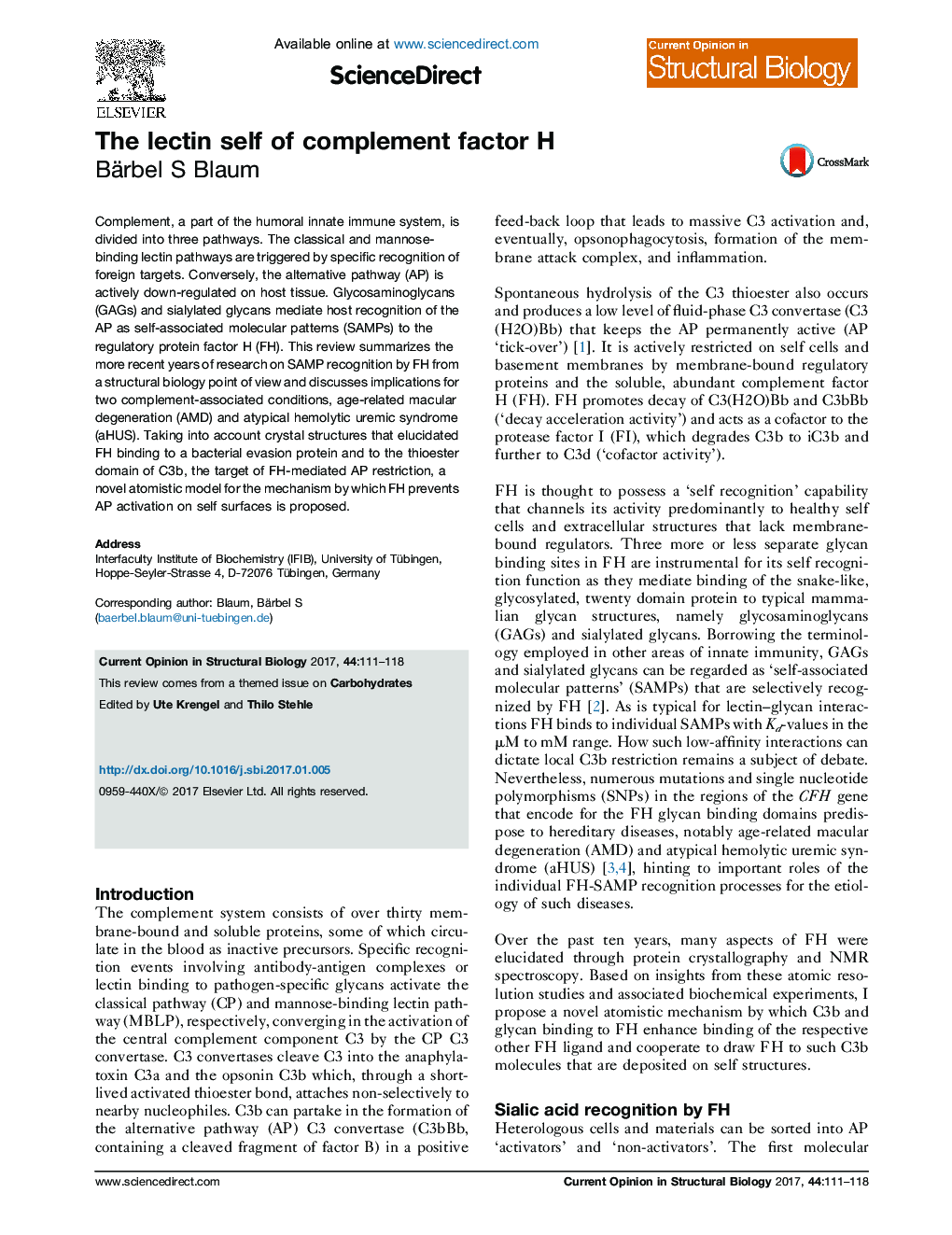| Article ID | Journal | Published Year | Pages | File Type |
|---|---|---|---|---|
| 5510850 | Current Opinion in Structural Biology | 2017 | 8 Pages |
Abstract
Complement, a part of the humoral innate immune system, is divided into three pathways. The classical and mannose-binding lectin pathways are triggered by specific recognition of foreign targets. Conversely, the alternative pathway (AP) is actively down-regulated on host tissue. Glycosaminoglycans (GAGs) and sialylated glycans mediate host recognition of the AP as self-associated molecular patterns (SAMPs) to the regulatory protein factor H (FH). This review summarizes the more recent years of research on SAMP recognition by FH from a structural biology point of view and discusses implications for two complement-associated conditions, age-related macular degeneration (AMD) and atypical hemolytic uremic syndrome (aHUS). Taking into account crystal structures that elucidated FH binding to a bacterial evasion protein and to the thioester domain of C3b, the target of FH-mediated AP restriction, a novel atomistic model for the mechanism by which FH prevents AP activation on self surfaces is proposed.
Related Topics
Life Sciences
Biochemistry, Genetics and Molecular Biology
Biochemistry
Authors
Bärbel S Blaum,
